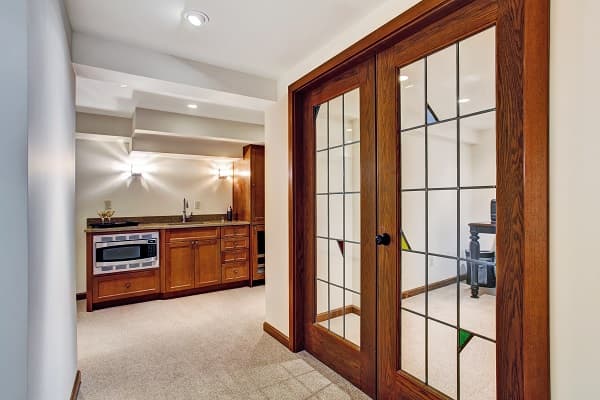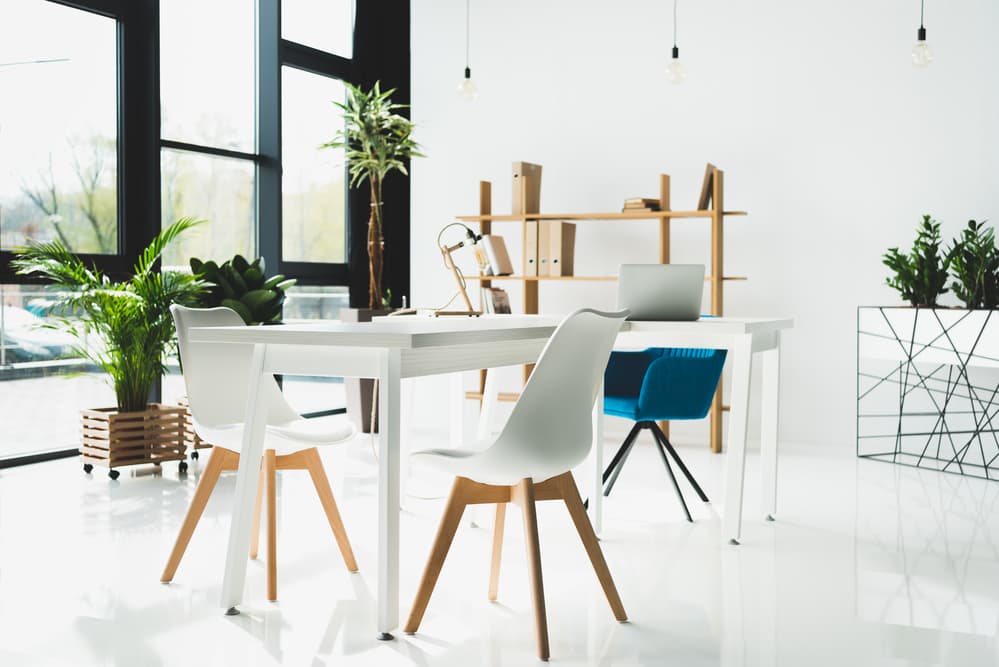Renovation Budget: the price for a gypsum installation budget
By Editorial Team
Updated on July 26, 2024

Do you need to have a gypsum board installed as part of a home renovation? Although it’s conceivable to carry this task out on your own, you may be more comfortable entrusting this project to a professional for both quality and speed.
Before picking up your phone, it’s normal to be curious about how much this project is going to cost.
How does one estimate the cost of laying gypsum?

Source: Canva
In order to determine the price of a gypsum laying project, you’ll need to first determine the area that will need to be covered. To do this, begin by measuring and calculating the surface area of your walls and ceilings. Although at first, you may think that doors and windows will need to be subtracted from the dimensions, that’s not the case. In fact, these areas will not change the number of panels you’ll need to carry out this project.
Once you determine how many panels you need, as well as the cost of both materials and labour, the contractor will be better equipped to provide you with a price corresponding to the area of the room you’re going to be renovating. In most cases, they’ll be working with panels that are 4 feet by 12 feet, as the installation of these will create a smaller number of joints. However, if you’re renovating a kitchen, bathroom or wet room, 4 x 8 inch panels will be installed as water repellent panels are only available in this format.
Panel type: a factor that influences the price

Source: Canva
When it comes to factors that may cause the cost of your project to vary, we should mention that the type of panel you decide to use will make a difference in the overall cost. In most cases, a standard panel is used. However, your project may require the use of waterproof, fire-resistant, flexible or DUROCK cement gypsum boards.
Regarding the waterproof panels, it’s important to mention that they’ll cost a little more than the standard panels. If you need this style of panel installed, you should expect to pay more. In fact, water-repellent gypsum panels will cost approximately $15 - 20/panel.
Further, if your project involves working with a commercial space, you’ll need to install fireproof panels. Again, this will have you paying more, as fireproof panels come in around $17 - 21, depending on the chosen format.
Some projects require the use of flexible panels. These are often used for the construction of walls with rounded lines, such as stairwells or arches. These panels will cost a similar price to the waterproof ones we mentioned above.
Finally, for those who wish to opt for DUROCK cement boards, these will be necessary for situations where you’ll need to solidify a wall or floor, or alternatively as a heat shield behind a fireplace. DUROCK cement boards can be installed at an average cost of $25 - 60. In comparison, a standard gypsum board costs between $11 - 16.
Type of panel | Price (per panel) |
Regular | approximately $11 - 16 |
Water-repellent | approximately $15 - 20 |
Flexible | approximately $15 - 20 |
Fireproof | approximately $17 - 21 |
DUROCK cement | approximately $25 - 60 |
The price of a gypsum laying project

Source: Canva
Including materials and installation, your gypsum laying project should cost you around $1 -3 per square foot. Of course, do bear in mind that this price is for standard panelling. To get a better idea of the costs based on the size of the renovated room, see the table below:
Surface | Price |
1000 square feet | 1000 - 3000$ |
2000 square feet | 2000 - 6000$ |
3000 square feet | 3000 - 9000$ |
4000 square feet | 4000 - 12 000$ |
5000 square feet | 5000 - 15 000$ |
Get 3 renovation quotes for your drywall installation project
RenoQuotes.com will put you in contact with 3 reliable contractors for your drywall installation project. Fill in the form on our homepage (it only takes a few minutes), and you will receive quotes from trusted professionals.
Dial 1-844 828-1588 to speak with one of our customer service representatives.
Looking for something else?
Related articles
The latest industry news, interviews, technologies, and resources.

Editorial Team
•20 May 2025
What wine lover hasn’t dreamed of having their own wine cellar to keep fine bottles within easy reach? To make this dream a reality, several rules must be followed. But what are the key principles that should guide you through this project?

Editorial Team
•17 Dec 2024
If you’re looking to let a little bit of light in between two otherwise dull or dingy rooms, or you’re looking for an alternative to the classic sliding door, then you might be in the market for French doors. These doors can be a beautiful addition to both classic and modern home décors.

Editorial Team
•15 Dec 2023
3D concrete printing is deemed the future of habitat for humanity. An overstatement? Think again—by 2060, 230 billion square metres will be needed to shelter our new fellow citizens, or the size equivalence of Paris multiplied every week over a 40-year period.

Léa Plourde-Archer
•07 Nov 2023
Epoxy is a popular floor covering material for garages, department stores and warehouses. Although this product is known for being durable and resistant to daily wear-and-tear, epoxy must be kept clean and maintained on a regular basis in order to keep its smooth and homogenous appearance.

Équipe éditoriale
•07 Nov 2023
As we’re well into the new year, it’s likely that you're ready to take on the projects that have been put on the backburner. For many, the bedroom is one of the most personal spaces, and it’s important that the decor reflects comfort and tranquillity. After giving much thought, this project is likely a top priority.